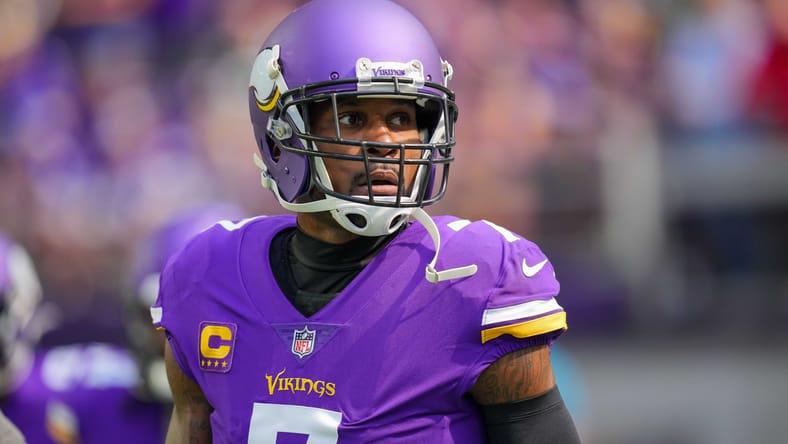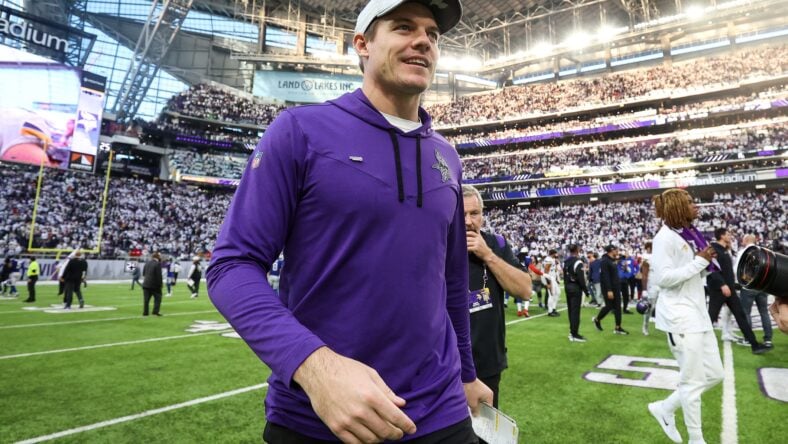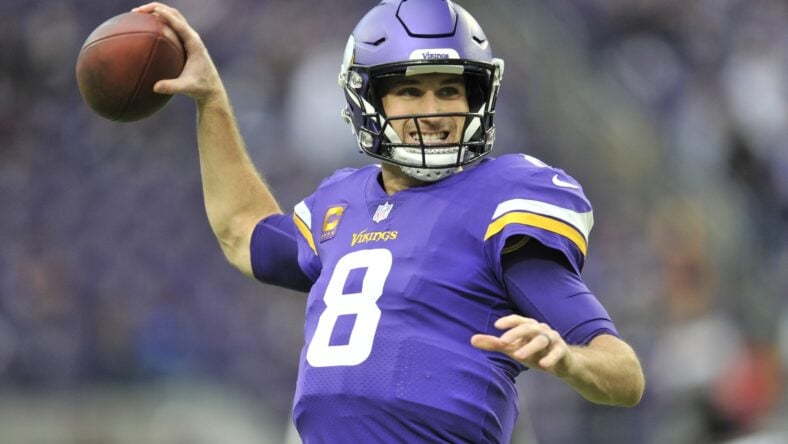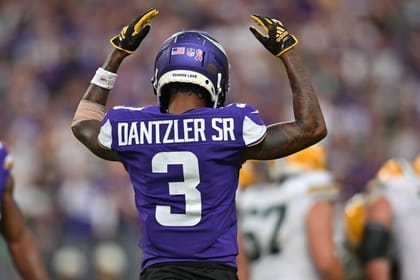Analytics Predict a Vikings Regression, but when Will It Come?

In the week leading up to the Green Bay Packers Super Bowl, err Week 17 matchup against the Minnesota Vikings, much was made regarding the underlying numbers for Kevin O’Connell’s squad. Despite being a 12 win team, there is no denying they’ve taken less than a traditional route to get there. More Vikings regression hit at Lambeau Field, and more may be coming, but when?
Through 16 games this season Kevin O’Connell’s Minnesota Vikings have a negative 19-point differential. That ranks 20th in the NFL. In case you’re a math whizz, and please strap in as we’re looking at numbers here, that’s six spots below the number of teams invited to the playoffs. Only if the Pittsburgh Steelers and their -52-point differential squeak in would there be a worse team, and the expected Wild Card foe New York Giants are dead even in the category.
Of course point differential is just one metric that could lend a hand towards projecting a record as ripe for regression. Packers prognosticator and everyone’s favorite cheesehead, Peter Bukowski, has been on about DVOA, EPA, and a host of other advanced analytics over the past week.
In gearing up for a rematch of the Week 1 drubbing, plenty of focus has been put on evaluating the efficiency shown by Minnesota. DVOA is essentially defined as a comparison of efficiency to league average based on situations and opponents during any given play. EPA is simply defined as expected points added and helps to evaluate what net positive or negative should be given inputs from a said drive.
You don’t need any in depth advanced analysis to understand Minnesota’s results beyond what the surface tells you. The Vikings have largely embraced this fact from the get-go this season, hanging their hat on a defense priding itself with a “bend-but-don’t-break” mantra. The problem there, evident for any fan that has watch Ed Donatell’s group, is that’s a positive spin on a group that has been entirely problematic.
Relegated to the doldrums of the NFL, Minnesota has coughed up 400 yards to opposing offenses with ease. They have been ran over on four separate occasions, and their losses have resulted in an average point differential of more than three scores. There’s no way to sugar coat that.

Therein lies Minnesota’s silver lining. Analytics are a predictive tool, but only in that they can help address the future, not define it.
In baseball analytics have long been adopted to provide a glimpse of what is to come for a batter or a pitcher. Point differential is used through pythagorean calculations for wins and losses, but does not have the same qualifies in football. With baseball being a long season that has a more continuous set of inputs, it may be easier to predict with a level of certainty that change is coming.
On the flip side, the NFL is a much shorter season with substantially changing inputs. Opponents are only replicated at most twice a season, and each matchup is separated with a full week of preparation and schematic changes. By and large, analytics in the NFL can probably be more reflective of a unit at a given time rather than predictive of an outcome in an instance.

This season we have seen the Vikings take it on the chin in four separate contests, Sunday’s game against Green Bay being among them. The problem is that they’ve also been analytically deserving of multiple other losses and yet have overcome adding tallies to that column in the standings. They have utilized an offense ripe with skill position players to mask some of their other deficiencies, and they have found ways to make timely plays that turn opportunity to their favor.
It’s certainly not an enviable strategy when trying to navigate through a playoff schedule, or even a regular season, but the reality is that it has worked at a 75% clip. Minnesota gives themselves a chance with a team coming to U.S. Bank Stadium for round one, and they need to win just four games in order to capture a franchise first Super Bowl ring. They’ve posted a winning streak longer than that this season already, and have largely allowed regression to rear its head all at once.
The numbers say more losses are coming, and there’s no denying that after Matt LaFleur’s team wiped the grass with Minnesota on Sunday afternoon. What they don’t say is when those losses will take place, and games beyond February 12 are only relevant in a hypothetical sense.
Ted Schwerzler is a blogger from the Twin Cities that is focused on all things Minnesota Twins and Minnesota Vikings. He’s active on Twitter and writes weekly for Twins Daily. As a former college athlete and avid sports fan, covering our pro teams with a passion has always seemed like such a natural outlet.

